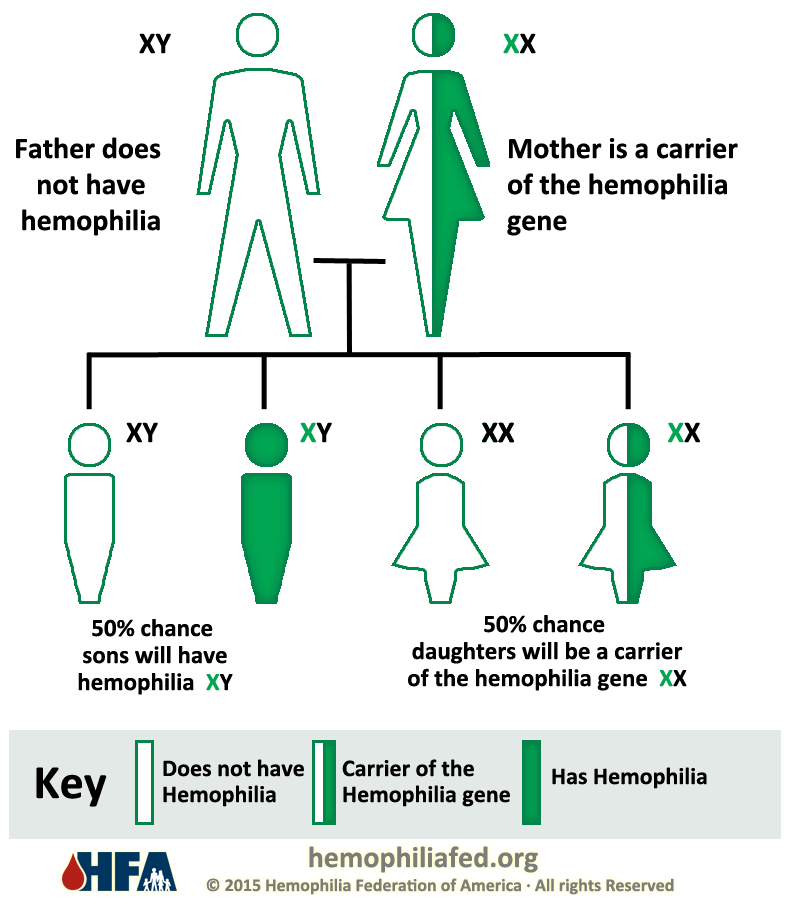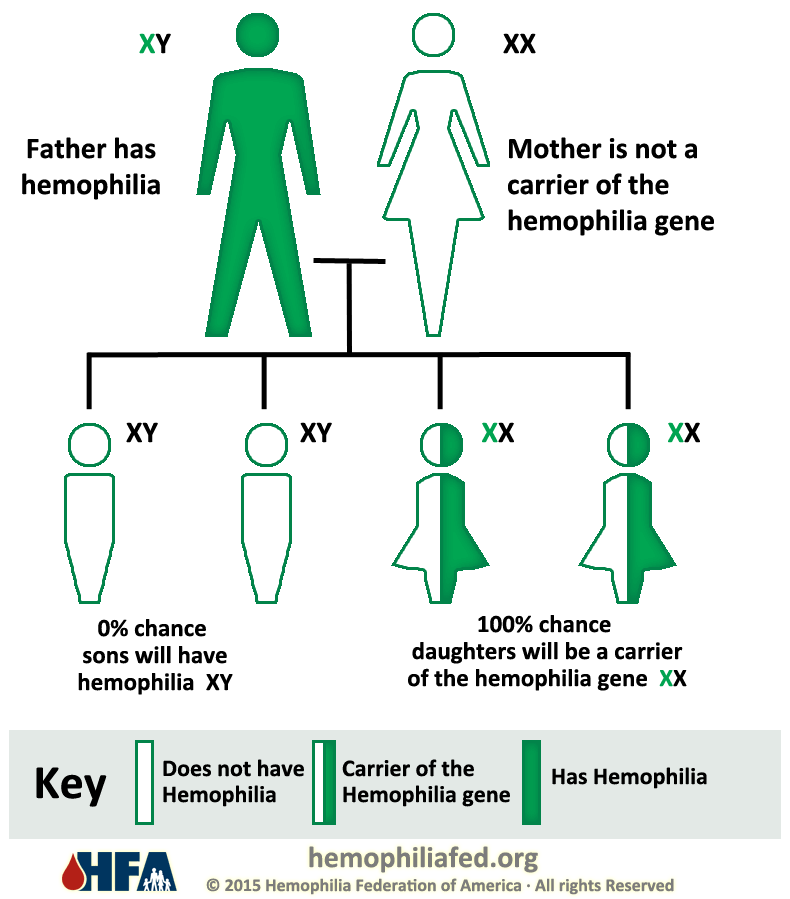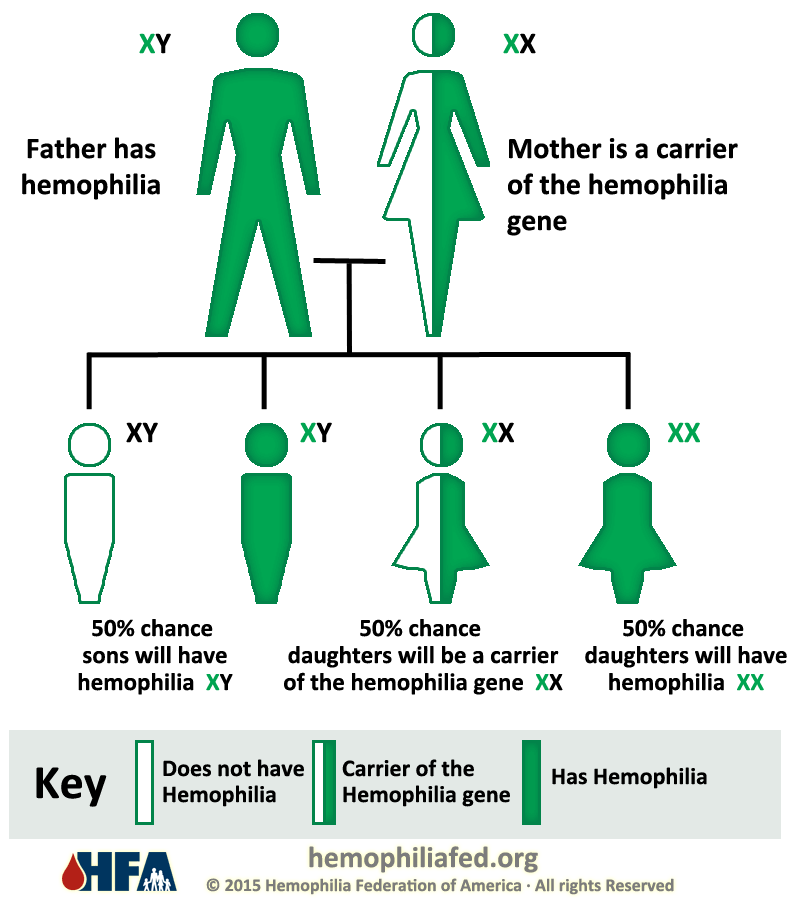patterns of inheritance for Hemophilia
Hemophilia A and hemophilia B are inherited in an X-linked recessive pattern. The genes associated with these conditions are located on the X chromosome, which is one of the two sexchromosomes. In males (who have only one X chromosome), one altered copy of the gene in each cell is sufficient to cause the condition. In females (who have two X chromosomes), a mutation would have to occur in both copies of the gene to cause the disorder. Because it is unlikely that females will have two altered copies of this gene, it is very rare for females to have hemophilia. A characteristic of X-linked inheritance is that fathers cannot pass X-linked traits to their sons.
In X-linked recessive inheritance, a female with one altered copy of the gene in each cell is called a carrier. Carrier females have about half the usual amount of coagulation factor VIII or coagulation factor IX, which is generally enough for normal blood clotting. However, about 10 percent of carrier females have less than half the normal amount of one of these coagulation factors; these individuals are at risk for abnormal bleeding, particularly after an injury, surgery, or tooth extraction.
The following diagrams show how the hemophilia gene can be inherited. It is important to note that in one-third of people with hemophilia, there is no family history of the disorder.
Mother is a carrier
- 50% chance that each son will have hemophilia.
- 50% chance that each daughter will be a carrier of the hemophilia gene.
Father has hemophilia
- All daughters will carry the hemophilia gene.
- No sons will have hemophilia.




Good information, 👍
ReplyDeleteWow ..wonderful
ReplyDelete